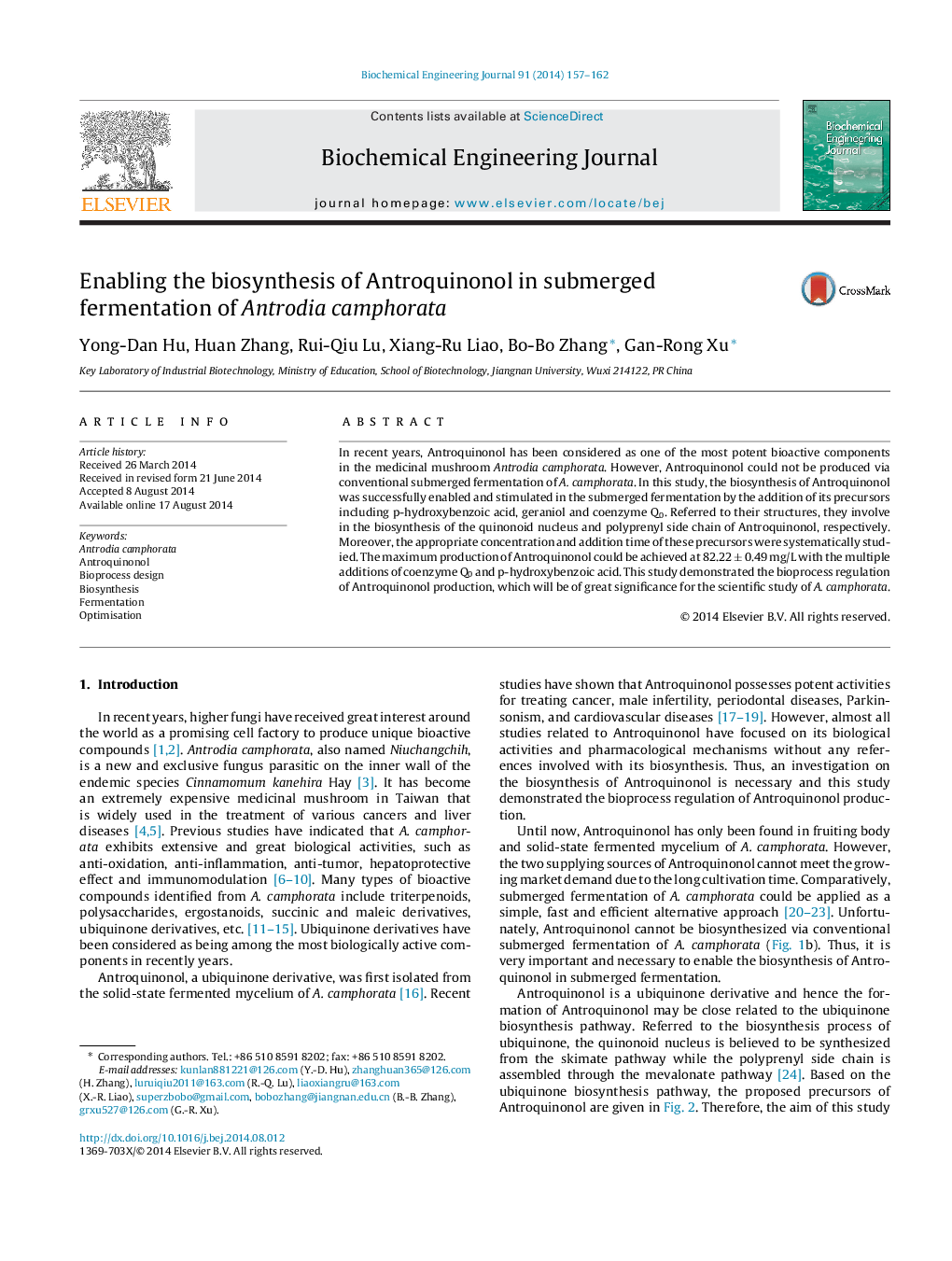| Article ID | Journal | Published Year | Pages | File Type |
|---|---|---|---|---|
| 3123 | Biochemical Engineering Journal | 2014 | 6 Pages |
•This study demonstrated the process regulation of Antroquinonol biosynthesis.•The biosynthesis of Antroquinonol was successfully enabled in submerged fermentation.•The effective precursors were p-hydroxybenzoic, geraniol and coenzyme Q0.•The maximum Antroquinonol yield was 82 mg/L with multiple addition of precursors.
In recent years, Antroquinonol has been considered as one of the most potent bioactive components in the medicinal mushroom Antrodia camphorata. However, Antroquinonol could not be produced via conventional submerged fermentation of A. camphorata. In this study, the biosynthesis of Antroquinonol was successfully enabled and stimulated in the submerged fermentation by the addition of its precursors including p-hydroxybenzoic acid, geraniol and coenzyme Q0. Referred to their structures, they involve in the biosynthesis of the quinonoid nucleus and polyprenyl side chain of Antroquinonol, respectively. Moreover, the appropriate concentration and addition time of these precursors were systematically studied. The maximum production of Antroquinonol could be achieved at 82.22 ± 0.49 mg/L with the multiple additions of coenzyme Q0 and p-hydroxybenzoic acid. This study demonstrated the bioprocess regulation of Antroquinonol production, which will be of great significance for the scientific study of A. camphorata.
